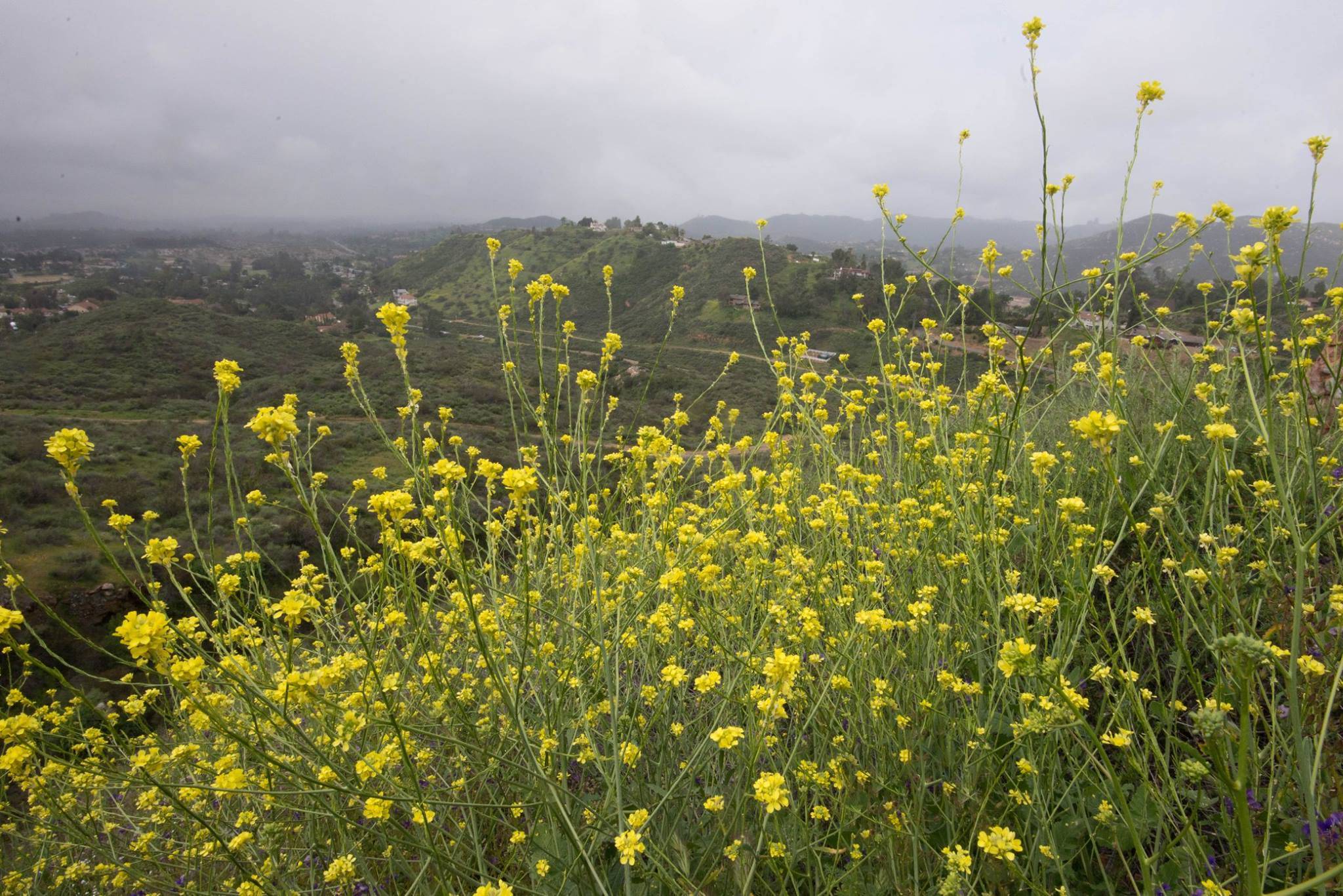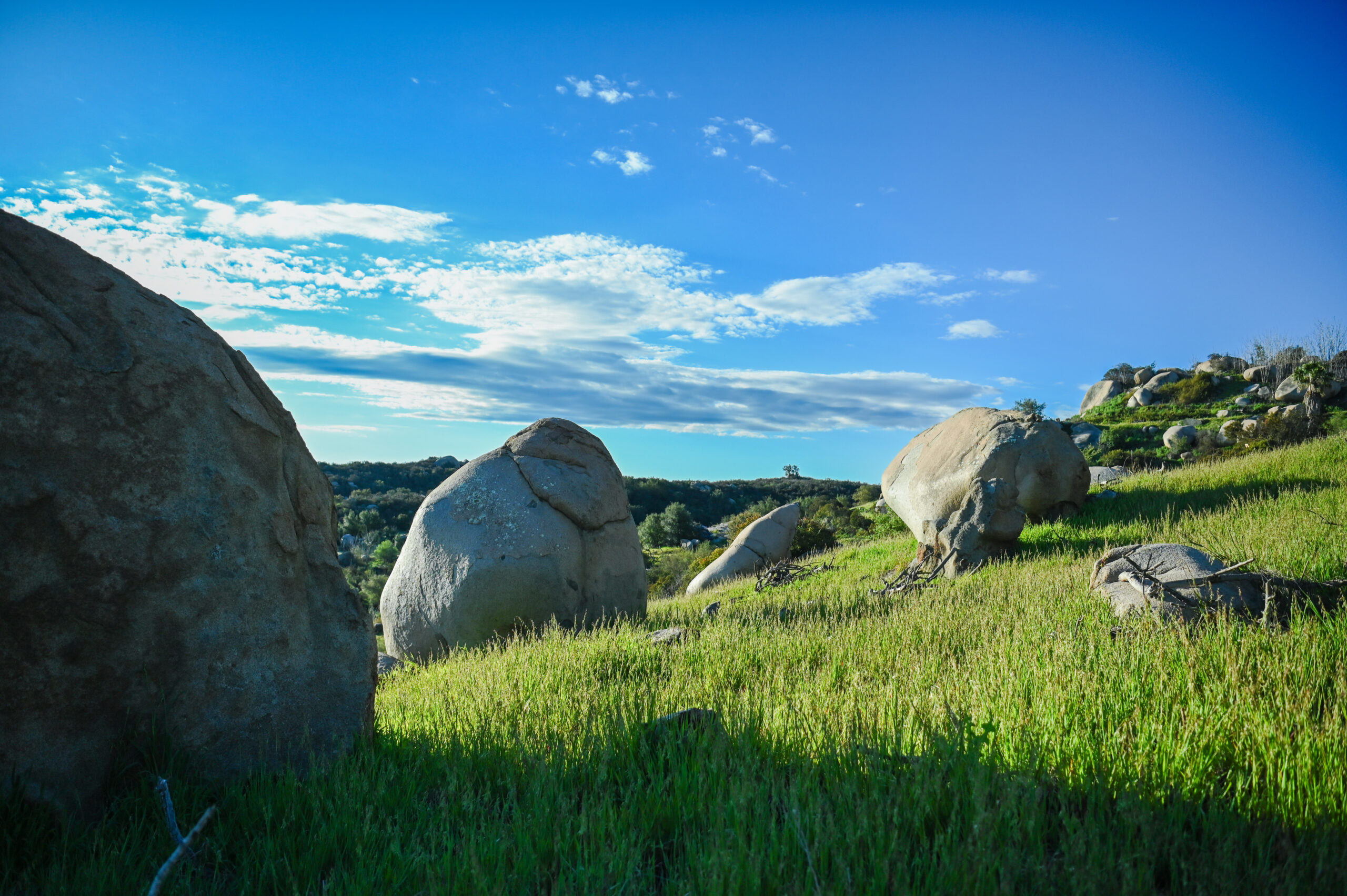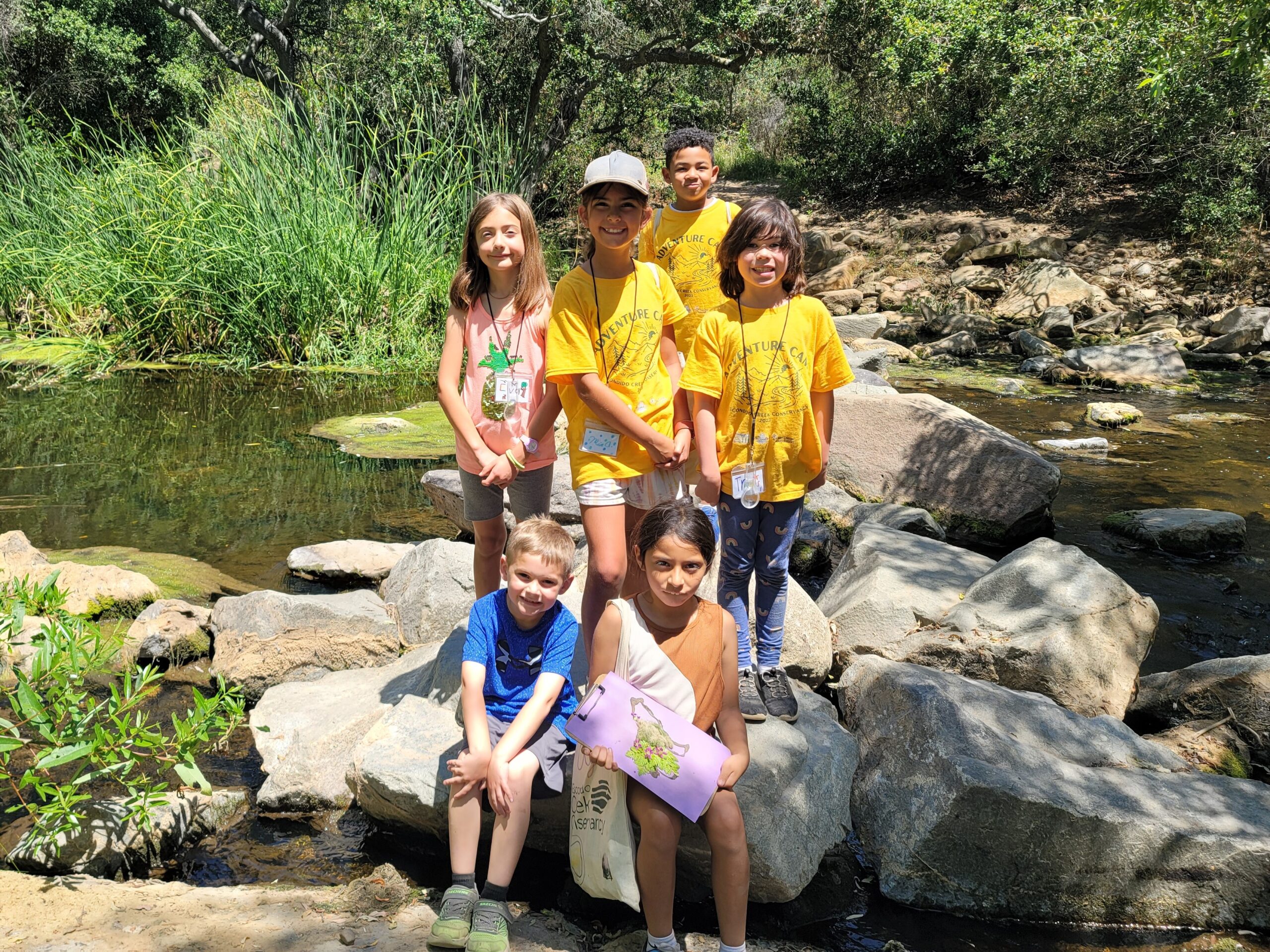
The Superdoom
How one flower increases fire frequency and reduces biodiversity.
Winter rains have graced us with an explosion of floral blooms throughout the Escondido Creek watershed. But along with our native flowering shrubs and wildflowers, the deceitful blossoms of black mustard (Brassica nigra) and shortpod mustard (Hirschfeldia incana) have also arrived. They’re tall, bright and beautiful… so what’s the problem? Land Managers and volunteers have been working tirelessly over the last few weeks to remove these ruthless contenders as they threatens our native ecosystems—starting with the soil!

Local volunteer, Brandon, taking on the mustard madness challenge at MJM Ranch Preserve!
Mustard isn’t just an opportunistic species, but recent research suggests that black mustard prevents native plants from growing by releasing chemicals into the soil. Most native plants in California rely on an underground fungal system present in the soils called mycorrhizae. These fungi attach themselves to the roots of native plants and help extract nutrients from the soil and into the plant itself. To the dismay of local plant communities, black mustard emits a compound that prevents these mycorrhizal spores from germinating, thus affecting the nutrients and future growth of native plants.
Now, there’s nothing wrong with a little friendly competition—as Darwin’s theory of natural selection suggests, survival of the fittest helps produce more resilient species. But when foreign species are introduced into a new environment, they have no natural competition—so long as you don’t count our hardy land crew and volunteers. Having no competition is much worse, as it threatens the biodiverse ecosystem we know and love. In this case, black mustard is especially troubling. The takeover of native shrublands transforms native shrub ecosystems into non-native grasslands—which has been known to increase fire frequency in shrublands as it dries and acts as tinder.
Thankfully, we’ve had much success this year in reducing the appearance of black mustard on our preserves, but the fight isn’t over. We’ll have to continue to address the blooms in the years to come. Feel free to join us in our monthly volunteer events to help us address invasive species on our preserves and don’t forget to donate.




